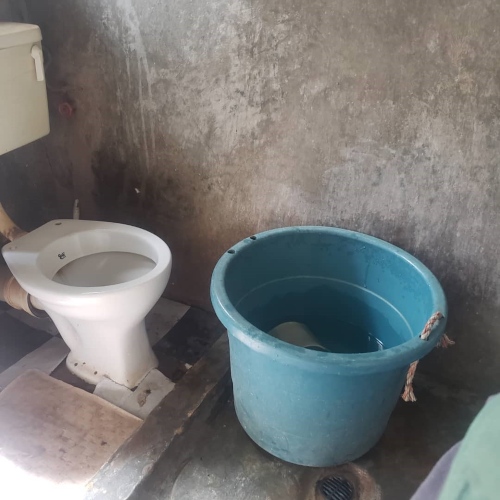
Failing water infrastructure in Malawi
Cecilia Alda-Vidal, a PhD student in Human Geography at The University of Manchester, discusses her research in Lilongwe, Malawi, which is demonstrating how difficult it is to strike a balance where water is scarce and resources limited.
Sewers provide one of the safest and most convenient ways of dealing with wastewater. However, we often forget one of their most important challenges: they require water to work properly. Research at Manchester highlights how important it is to pay attention to the solutions developed by residents themselves, and to reflect on whether (and how) these can be integrated into wider infrastructure systems.
Inequalities in Malawi's water infrastructure
Malawi has been suffering severe droughts with increasing frequency and is considered highly vulnerable to climate change. In Lilongwe, the capital city, water shortages are common and can last from a few hours to several days. Shortages affect more intensively informal settlements where more than 66% of the urban population live.
In informal settlements, access to water and sanitation is precarious as a result of discriminatory infrastructure development practices and the prioritisation of more affluent neighbourhoods in the provision of services. Most households in informal neighbourhoods collect water from kiosks and use self-constructed pit latrines. When water stops in these areas, residents must turn to unsafe water sources and face serious health and hygiene challenges.

This contrasts with the situation in the richer parts of the city, where residents have water taps and flush toilets at home, and many have been able to afford storage tanks to cope with service disruptions. However, water shortages in these areas have other indirect challenges. When water supply stops for several days and toilets aren’t flushed, the solids in the sewer lines aren’t washed away and produce blockages that can pollute the environment and threaten the health of residents.
Water shortages also mean that flush toilets remain non-operational for hours or days, interfering with residents’ toileting routines. In order to avoid the nuisance of having to collect and store water to keep their flush toilets operational, some residents have taken to constructing traditional latrines in their backyards. This is interesting because the traditional pit latrine constitutes the main mode of sanitation in informal settlements and may therefore be considered a step down on the ‘sanitation ladder’.
Although municipal officials are fully aware that backyard latrines are in widespread use in parallel to flush toilets, their existence is not acknowledged in official urban or sanitation planning documents.
We are linking up with multi-national agencies and initiatives, such as the World Toilet Organization, to help develop and design interventions that take into account local needs.
Recommendations for the future
For decades, investments in water and sanitation have prioritised the construction of large-scale infrastructures. An example of this is a new $100 million project that includes the expansion of the piped sanitation system. While upgrading the municipal sewer may be considered a priority that will benefit 90,000 people, the project also raises critical questions around water security.
Can investment in technology be considered socially and environmentally just if it redirects scarce financing and water to a small, privileged minority to allow them to flush their toilets? Are other more equitable ways forward possible? An alternative could be to acknowledge water shortages as the ‘new normal’ and to accept that therefore, flush toilets will not always work, backyard latrines will continue to exist and be relied on. Allowing and encouraging residents to construct and maintain backyard latrines in a safe manner may not be a perfect solution, but equitable development requires compromises.
Development-oriented investment in Malawi should focus on reducing health-related risks and improving the lives of the urban poor. We work with local universities and organisations, for instance the Urban Research and Advocacy Centre (URAC) and Hyphen Media Institute, to support knowledge creation and encourage appropriate action.
This feature was co-written by Dr Deljana Iossifova, Senior Lecturer in Urban Studies.
-
Cecilia Alda-Vidal
PhD student in Human Geography, The University of Manchester
-
Dr Deljana Iossifova
Senior Lecturer in Urban Studies, School of Environment, Education and Development, The University of Manchester
View Dr Deljana Iossifova's research profile


